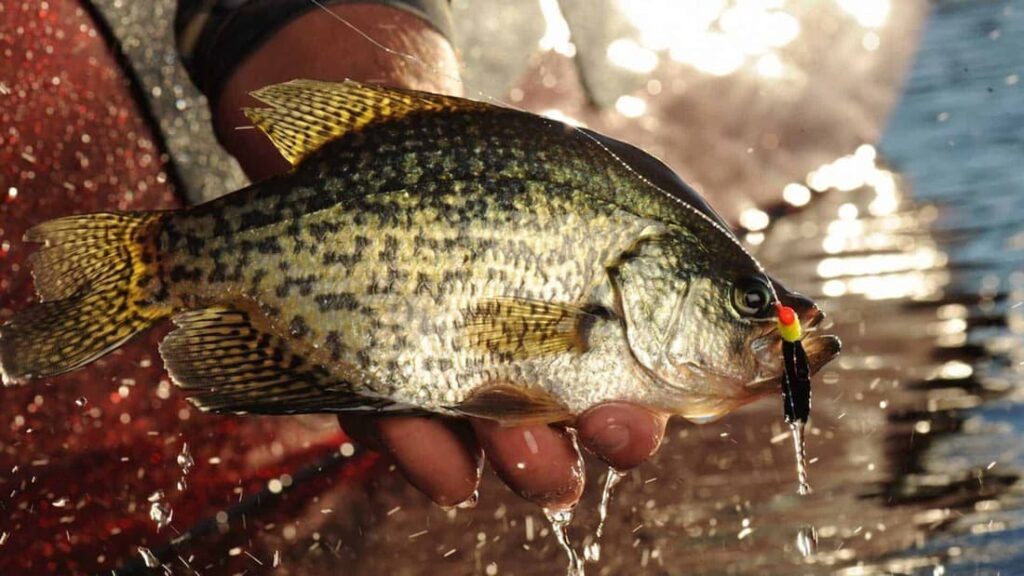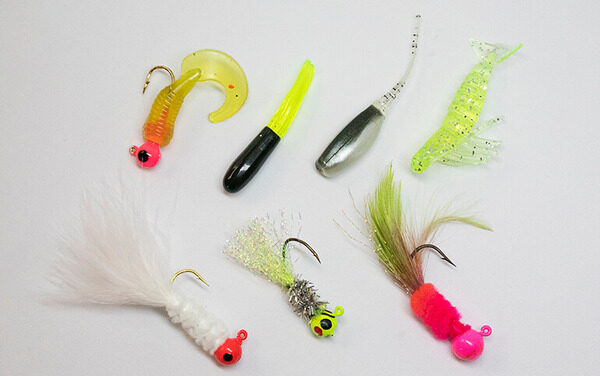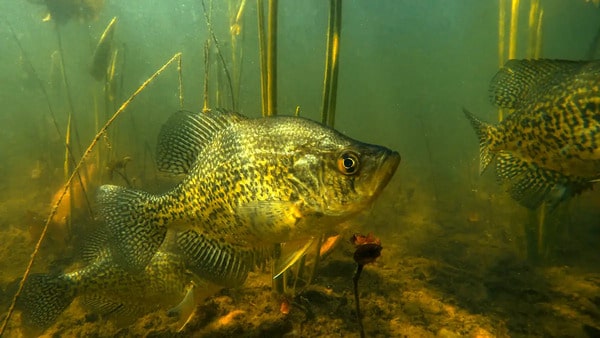Crappie Fishing with Jig and Bobber
Not all fishing has to be about catching giant fish. Sometimes, you just want to get out on the water and have some fun.
And it doesn’t get much more fun that crappie fishing. By far the most popular technique is crappie fishing with a jig and bobber.
So let’s break it down real quick.
Jig and Bobber Setup
Slip Bobber
The slip bobber is a float with a hole all the way though it where the line can freely slip through.
You will need to attach a bobber stop on your line somewhere above the slip bobber.
This will stop the jig from pulling more line through the bobber and set how deep the jig will sit in the water.
Slip bobbers are very nice because they allow you to cast much further and much more accurately.
This is because as you are casting, the bobber sits right up against the jig.
Fixed Bobber
You are going to fish a fixed bobber the exact same way as the slip bobber.
The difference is that the bobber is fixed in one place on your line and won’t slide around at all.
The downside of this is that it makes it a bit more difficult to cast. Your line has two points of mass, the jig and the bobber.
So casting is a bit more difficult as the two separate mass swing around in the air.
However, the advantage of fixed bobbers is that you don’t need to worry about getting any bobber stops. All you need is the jig and the bobber.
Why is the Jig and Bobber So Good?
Depth Control
Depth control is the biggest advantage of the jig and bobber setup.
You can choose the exact depth you want your jig to sit in the water, and keep it there for the entire cast.
There are essentially no other crappie rigs or lures that allow you to do that.
Retrieval Control
Also, the jig and bobber setup allows you to fish at whatever speed you want.
You can fish slow, fast, aggressive, subtle, it doesn’t matter.
That jig will always be sitting right under the bobber, right where you want it.
Bait Profile
The little jig head is the perfect way to present a very realistic and enticing bait.
There aren’t bulky treble hooks or alarming metal hardware.
Just a small, realistic bait that looks just like the stuff they are eating.
Choosing Leader Length
Keeping your jig at a stationary depth is very important, but keeping it at the right depth is just as important.
The biggest thing to understand is that crappie feed upwards. They look lightly upwards and prefer to swim up to attack and eat their prey.
So wherever the crappie are in the water column, you want your jig 6-12 inches above that.
In very shallow water (less than 3 feet), this will usually mean keeping your jig quite close to the bobber.
About a 6 -12 inch leader length is ideal. If the water is between 3-5 feet, a 18-30 inch leader is great.
And anything beyond that depth is very situational. Sometimes crappie will be suspended even in deep water, and you will need a shorter leader.
And sometimes they will be glued to the bottom, and you will need a rather long leader.
Deep water requires a bit more figuring out, but once you start getting bites at one depth, you know your doing somethin right.
Choosing the Right Crappie Jig
To be honest, crappie don’t seem to picky all that picky. I have had success with just about every small jig I’ve thrown under a bobber.
The biggest thing is size. Keep it small. The biggest I’ll go is a 1/16 oz jig head.
And I pair that with a small tube, minnow, or grub bait.
Hair jigs are also very good options, and they are much more durable than soft plastics.
Now, there will be some days that crappie do prefer one bait over another.
So if you aren’t getting any bites, try switching colors or styles of soft plastic until you get some bites.
How to Retrieve the Jig and Bobber
Retrieval is super simple with the jig and bobber. You just going to cast it out, let the jig sink down, and then slowly twitch the bobber with your rod tip.
Give it two or three small twitches and then pause. Usually the crappie will eat the jig on these pauses when the bait is sinking back down and swinging forward a bit.
So when you pause it, watch your bobber closely. And once the bobber goes under, set the hook.
In cold water, work the bait bit slower, and during the spring and summer, you can get fairly aggressive with it.
Where to Fish the Jig and Bobber
Simply put, your going to fish this setup wherever the crappie are.
Typically, crappie love to school up around grass lines, docks, or brush piles.
Now, the jig is not exactly weedless at all. So make your casts around the cover first.
And then shorten up you leader so that you are fishing the jig above the cover.
Since crappie prefer to feed upwards anyway, they are very willing to come up out of the cover to eat the jig.
The versatility of this technique makes it perfect for deep water crappie fishing with electronics or just catching crappie in a pond from the bank.
Gear Setup
You don’t need any fancy gear to go out and catch a lot of crappie.
Really any spinning rod setup will work just fine. I like a medium or medium-light, but whatever you have is fine. For line, 4-8 lb test is perfect.
Definitely use either monofilament or fluorocarbon line, because crappie are primarily sight feeders, and braided line will spook them off.
Reeling this In
Crappie fishing offers a fun and rewarding experience without the need for fancy gear or the pursuit of giant fish.
The jig and bobber setup, whether using a slip or fixed bobber, provides excellent depth control, retrieval flexibility, and a realistic bait profile, making it a highly effective technique.
By understanding the nuances of leader length, jig selection, and retrieval methods, anglers can consistently attract crappie.
This accessible and enjoyable form of fishing is perfect for anyone looking to enjoy time on the water and catch plenty of fish.










